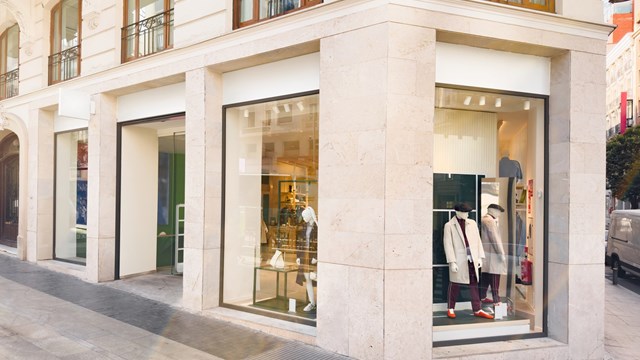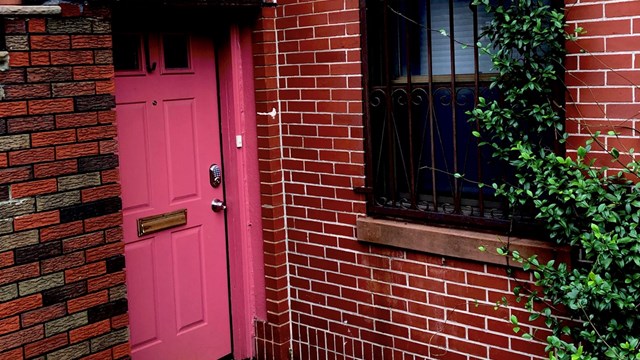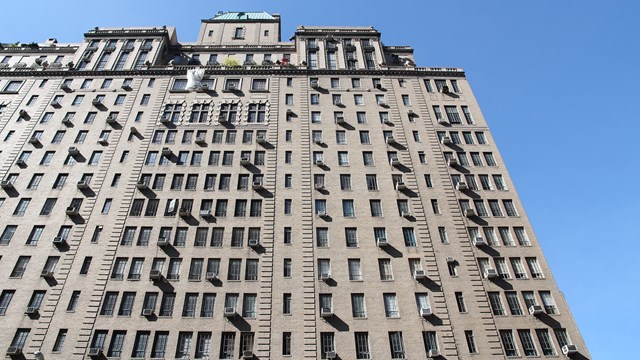There was a time not so long ago when having ground floor commercial space—or any rentable non-residential space, really—was a huge asset for a condominium or co-op building. The income stream from the space to the community helped offset operating costs and reduce the frequency and amount of assessments and monthly fee increases. Often, these commercial leases were written on a ‘net’ basis, meaning the tenant was also responsible for their own expenses. The rental income from these tenants acted almost as a subsidy to the community.
Then came a series of unrelated incidents that has led to a steep decline in both the demand for commercial space and its value. Commercial vacancy rates in metro areas across the country are at levels not seen in decades. Spaces sit vacant for long periods of time. And this trend isn’t limited to one particular market.
New York
A decade or so ago, even the sky didn’t seem to be the limit when it came to demand—and asking rents—for commercial space in New York City. Depending on the neighborhood and the square footage available, having such an asset was almost like having an endowment or a trust fund. Clearly, large co-op and condo properties with ground floor, basement, and even second floor spaces zoned for non-residential use were the big winners in this contest. Those with spaces that could house parking facilities were even more fortunate. Boards routinely depended on ever-rising rents to help subsidize residential contributions and meet the community’s financial and maintenance obligations.
However, according to Brett Rovner, a commercial leasing agent with AKAM, a real estate management firm with offices in New York, “That situation has changed, and it’s causing cash flow problems.” However, he notes that the impact varies from building to building, and that “people forget that ground floor retail wasn’t doing well even prior to the pandemic,” though the slump definitely worsened during and afterward. “Once stores and restaurants started to recover, buildings that didn’t have venting for restaurants in vacant space struggled,” Rovner continues. “Rents have come down 20 to 25 percent from pre-pandemic levels. And that’s for straight retail. A lot of buildings also have commercial spaces that aren’t retail per se, like doctor’s offices or other offices in their lobbies. Those spaces have taken a hit as well, though not as much. Those with garage spaces are less affected. Due to the pandemic and the fact that fewer people are taking public transit, garages are doing very well, which helped offset the loss from retail spaces.” If a building has a garage-ready space, says Rovner, they will rent it.
Right now, Rovner sees the real vacancy rate at about 25 percent. “It will rebound,” he says, “but slowly—and there are a lot of reasons for this. More than COVID, it’s perceived safety issues and inflation right now. Asking rents per square foot have fallen 15 to 20 percent. Landlords won’t drop their asking price because they don’t want to set the market at that lower price, but often will build concessions into a new lease to average a higher rent per foot. Taking prices are down 20 to 25 percent from their peak.”
He explains that the market is also seeing a shift away from national and big-box type retailers to other types of users—particularly medical and related uses. Where you might have seen Banana Republic or Urban Outfitters before, you’re now likely to see a walk-in clinic or other health-related tenant. Rovner says that the much-discussed ‘malling’ of Manhattan’s avenues appears to be on hold for now, though he believes the trend will likely return.
He cautions boards to be savvy when dealing with commercial vacancy problems. The board should act as a cohesive unit and move quickly; don’t let factions or individual board members control or derail negotiations, and don’t put off decision making till the next meeting, whenever that might fall.
Chicago
Unlike New York, Chicago has had a problem with commercial vacancies since the 2000s, when many new buildings in the central business district (CBD) were specifically built with new commercial space included. Prior to that, some existing buildings that converted from rentals to condominium or occasionally co-op ownership might have a limited amount of ground floor space—perhaps a bank—on the first floor. “Most of that ground floor space is still vacant and stagnant,” says Brian Lozell, a vice president with Associa Chicagoland.
“Perhaps 75 percent of buildings in the CBD have some commercial ground floor space,” says Lozell. “Not in, say, Lincoln Park or other downtown-adjacent neighborhoods. Those rarely have a commercial component. About 30 to 35 percent of these spaces have never been rented. Our overall vacancy rate hovers around 20-plus percent.
“What keeps the spaces empty,” Lozell stresses, “is that first of all, in many cases the commercial spaces were retained by the property’s developers, and with little to no expense resulting from holding the properties, the developers gained more from writing off the loss than by renting them out for less. The majority of the spaces would be for light retail anyway, so you can’t put in restaurants. There’s just not a huge base of prospective business types to rent these spaces to.”
Lozell notes that other factors impacting the Chicago market for these spaces include crime levels (both actual and perceived), bouts of social unrest, and lack of foot traffic. Lozell explains that unlike New York, Chicago is a driving city. Residents travel by car, entering and exiting their buildings from the interior of an on-site garage or adjacent parking spot rather than from the street, so they often don’t notice or even see the vacant commercial space.
As a result, the vacant space doesn’t typically have the same impact on residential sales in a given building, or the value of units therein. “Buyers buy in a building because that’s where they want to live,” says Lozell. “The sidewalks are shoveled and the grounds maintained. If the environment isn’t like a vacant strip mall or office building, there’s little to no cognizance of the vacant space. Aesthetics outside of the vacant space are the condo association’s responsibility. They still have to take care of the space; the owners just don’t care about it.”
As the economy regains its footing after the massive, lingering shock of the pandemic, and inflation rates level out and hopefully recede, the financial landscape for residential buildings with commercial spaces to lease will no doubt evolve as well. How much benefit a given community will reap from a ground floor storefront—be it retail, restaurant, or office space—will depend on a blend of geography, local economics, demographics, and, of course, the market itself.
A.J. Sidransky is a staff writer/reporter for CooperatorNews, and a published novelist. He may be reached at alan@yrinc.com.










Leave a Comment